On the final Monday in May America takes the time to honor those who died in service to its armed forces. This tradition started in 1868 when former Civil War soldiers decided to decorate the graves of fallen veterans. While the custom is a long held tradition around the world, this time was different. So many soldiers had died in the recent Civil War, and so many families effected, that having a single day to do this helped to bring larger importance to the act. It wasn’t until 1971 with the enactment of the Uniform Monday Holiday Act that the day created a yearly 3 day weekend.
To honor the veterans who gave it all here are some road trip ideas that have a military background. Some can be completed in one day some might take two. A great site to learn more about Ohio historical places and come up with you own trips is http://touringohio.com
Northwest Ohio and the War of 1812:
Fallen Timbers Battlefield and Fort Miamis National Historic Site – Fallen Timbers was the site of a major battle between American Indians and the newly formed United States of America. At the treaty of Paris in 1783 Britain gave the USA all of the land east of the Mississippi River. This include the Ohio Country. The American Indian tribes living in the area felt that they had no representation in the matter and that the land was still theirs. This led to the Battle of Fallen Timbers. At this battle American Soldiers fought the natives who were supplied by British from Fort Miamis. The defeat of the American Indians led to the Treaty of Greenville (see Garst Museum Below).
Fort Meigs – This fort with stood 2 attacks from the British and defended the Ohio country during the War of 1812. This is a full standing fort with a visitors center.
Rutherford B Hayes Presidential Library and Museum: The home and Museum of The former Civil War General and 19th President. For more information see our review.
Southwest and the Civil War
William Henry Harrison Tomb – The resting place of the 9th President and Ohio Indian Wars Veteran. He was the first president to die in office and is still the short serving person to have held the office. See our review here
National Underground Railroad Freedom Center – This museum is dedicated not only to the Underground Railroad and the struggle of American Slaves, but the struggle of all people for equality, even in modern times. The museum is a powerful testament to the struggles that lead to the Civil War.
William Howard Taft National Historic Site: The birthplace and boyhood home of the 27th President. Governor of the Philippines following the Spanish American war, Secretary of War, and Commander in Chief gives this site some great military background. See our review here
Land of Grant : Grant Birthplace and Grant Boyhood home and School House – The 18th President and commander of the Union armies during the civil war. Visit where he was born, grew up and learned. See our review here.
West
Fort Jefferson – The site where St. Clair retreated after his defeat.
Garst Museum – Dedicated to the history of Darke county this museum tells the story of the Treaty of Greenville and the role it played in shaping Ohio. A nice large museum with lots of artifacts from the area. See our review here.
Fort Recovery – The site of the two largest and most important American Indian battles, The Defeat of St. Clair and the Battle of Fort Recovery. St. Clair had 900 of his 1200 men killed, about 1/4 of the US army. It is also the site of the fort that was built after the battle. It was this fort that allowed the US to win the next battle and led to the signing of the Treaty of Greenville.
Northeast
Fort Steuben – Built to protect the surveyors of the northwest Territory. The Fort has a visitor center, full wood fort and large grounds surrounding it.
Fort Laurens – Site of the only Revolutionary War battle in the state.
McCook house – Home of the “Fighting McCooks.” Major Daniel McCook and his 9 sons and 6 nephews fought before and mostly during the Civil War.
The McKinley Presidential Library & Museum – The Tomb of William McKinley, the 25th President, and commander and chief during the Spanish-American War. Next to the tomb is the Library and Museum which house exhibits on the natural world, Stark County, and the life of the president. See our review here.

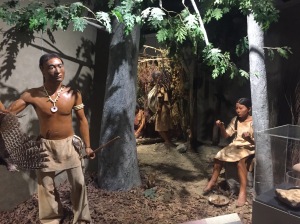







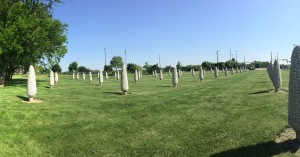
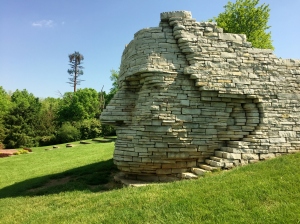
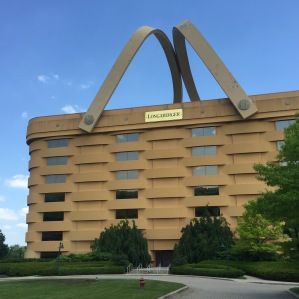

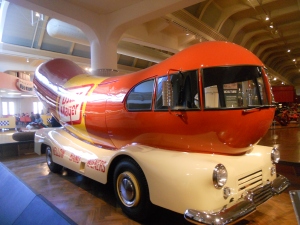 Inside the main museum is a lot more artifacts from Ohio. The 1952 Oscar Mayer
Inside the main museum is a lot more artifacts from Ohio. The 1952 Oscar Mayer 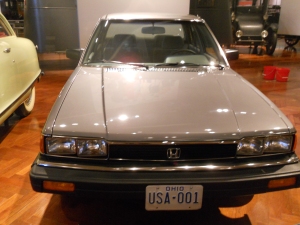 Japanese car, a Honda Accord, built in America. With the OHIO license plate USA – 001 it is hard to miss the Buckeye State heritage. The car was built in the Marysville Plant. Another exhibit is the history of tourism by car. This includes a camper used by Henry Ford and two Ohioans, Thomas Edison and Harvey Firestone. The camper was used on outings the three took as friends.
Japanese car, a Honda Accord, built in America. With the OHIO license plate USA – 001 it is hard to miss the Buckeye State heritage. The car was built in the Marysville Plant. Another exhibit is the history of tourism by car. This includes a camper used by Henry Ford and two Ohioans, Thomas Edison and Harvey Firestone. The camper was used on outings the three took as friends.